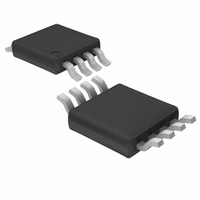LTC4300A-3CMS8 Linear Technology, LTC4300A-3CMS8 Datasheet - Page 7

LTC4300A-3CMS8
Manufacturer Part Number
LTC4300A-3CMS8
Description
IC BUFFER BUS HOTSWAP 2WR 8MSOP
Manufacturer
Linear Technology
Type
Hot-Swap Switchr
Datasheet
1.LTC4300A-3CMS8.pdf
(12 pages)
Specifications of LTC4300A-3CMS8
Applications
General Purpose, Buffer/Bus Extender
Internal Switch(s)
Yes
Voltage - Supply
2.7 V ~ 5.5 V
Operating Temperature
0°C ~ 70°C
Mounting Type
Surface Mount
Package / Case
8-TSSOP, 8-MSOP (0.118", 3.00mm Width)
Lead Free Status / RoHS Status
Contains lead / RoHS non-compliant
Available stocks
Company
Part Number
Manufacturer
Quantity
Price
Company:
Part Number:
LTC4300A-3CMS8
Manufacturer:
LT
Quantity:
10 000
Part Number:
LTC4300A-3CMS8
Manufacturer:
LT/凌特
Quantity:
20 000
Company:
Part Number:
LTC4300A-3CMS8#PBF
Manufacturer:
Linear Technology
Quantity:
135
Part Number:
LTC4300A-3CMS8#TRPBF
Manufacturer:
ADI/亚德诺
Quantity:
20 000
OPERATIO
Start-Up
When the LTC4300A-3 first receives power on its V
either during power-up or during live insertion, it starts in
an undervoltage lockout (UVLO) state, ignoring any activ-
ity on the SDA and SCL pins until V
part also waits for V
the part does not try to function until it has enough voltage
to do so.
During this time, the 1V precharge circuitry is also active
and forces 1V through 100k nominal resistors to the SDA
and SCL pins. Because the I/O card is being plugged into
a live backplane, the voltage on the backplane SDA and SCL
busses may be anywhere between 0V and V
the SCL and SDA pins to 1V minimizes the worst-case
voltage differential these pins will see at the moment of con-
nection, therefore minimizing the amount of disturbance
caused by the I/O card.
Once the LTC4300A-3 comes out of UVLO, it assumes that
SDAIN and SCLIN have been inserted into a live system
and that SDAOUT and SCLOUT are being powered up at
the same time as itself. Therefore, it looks for either a stop
bit or bus idle condition on the backplane side to indicate
the completion of a data transaction. When either one
occurs, the part also verifies that both the SDAOUT and
SCLOUT voltages are high. When all of these conditions
are met, the input-to-output connection circuitry is acti-
vated, joining the SDA and SCL busses on the I/O card with
those on the backplane, and the rise time accelerators are
enabled.
Connection Circuitry
Once the connection circuitry is activated, the functional-
ity of the SDAIN and SDAOUT pins is identical. A low forced
on either pin at any time results in both pin voltages being
low. For proper operation, logic low input voltages should
be no higher than 0.4V with respect to the ground pin voltage
of the LTC4300A-3. SDAIN and SDAOUT enter a logic high
state only when all devices on both SDAIN and SDAOUT
release high. The same is true for SCLIN and SCLOUT. This
important feature ensures that clock stretching, clock syn-
chronization, arbitration and the acknowledge protocol al-
ways work, regardless of how the devices in the system are
tied to the LTC4300A-3.
U
CC2
to rise above 2V. This ensures that
CC
rises above 2.5V. The
CC
. Precharging
CC
pin,
Another key feature of the connection circuitry is that it
provides bidirectional buffering, keeping the backplane
and card capacitances isolated. Because of this isolation,
the waveforms on the backplane busses look slightly
different than the corresponding card bus waveforms, as
described here.
Input to Output Offset Voltage
When a logic low voltage, V
LTC4300A-3’s data or clock pins, the LTC4300A-3 regu-
lates the voltage on the other side of the part (call it
V
following equation (typical):
where R is the bus pull-up resistance in ohms. For ex-
ample, if a device is forcing SDAOUT to 10mV where
V
the voltage on SDAIN = 10mV + 75mV + (3.3/10000) • 70
= 108mV (typical). See the Typical Performance Charac-
teristics section for curves showing the offset voltage as
a function of V
Propagation Delays
During a rising edge, the rise-time on each side is deter-
mined by the combined pull-up current of the LTC4300A-
3 boost current and the bus resistor and the equivalent
capacitance on the line. If the pull-up currents are the
same, a difference in rise-time occurs which is directly
proportional to the difference in capacitance between the
two sides. This effect is displayed in Figure 1 for V
= 3.3V and a 10k pull-up resistor on each side (50pF on one
side and 150pF on the other). Since the output side has
less capacitance than the input, it rises faster and the
effective propagation delay is negative.
There is a finite propagation delay through the connection
circuitry for falling waveforms. Figure 2 shows the falling
edge waveforms for the same V
equivalent capacitance conditions as used in Figure 1. An
external NMOS device pulls down the voltage on the side
with 150pF capacitance; the LTC4300A-3 pulls down the
voltage on the opposite side, with a delay of 55ns. This
delay is always positive and is a function of supply voltage,
LOW2
CC
V
= 3.3V and the pull-up resistor R on SDAIN is 10k, then
LOW2
) to a slightly higher voltage, as directed by the
= V
LOW1
CC
and R.
+ 75mV + (V
LOW1
CC
LTC4300A-3
CC
, is driven on any of the
/R) • 70 [Ω]
, pull-up resistors and
sn4300a3 4300a3fs
CC
= V
7
CC2















